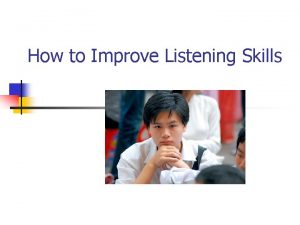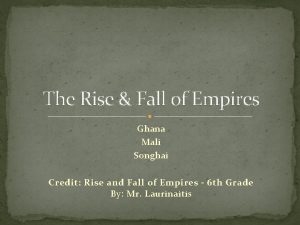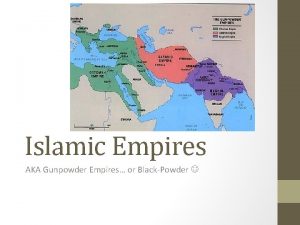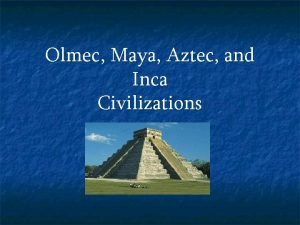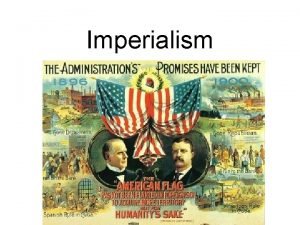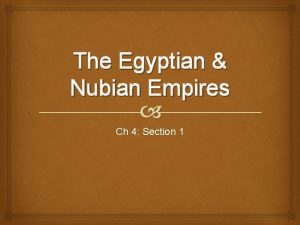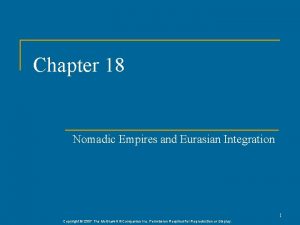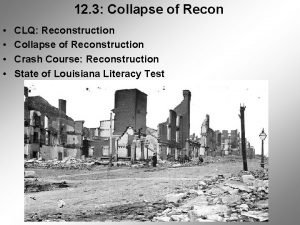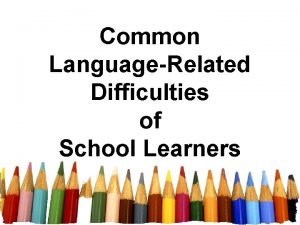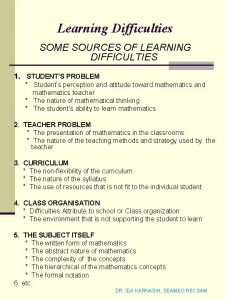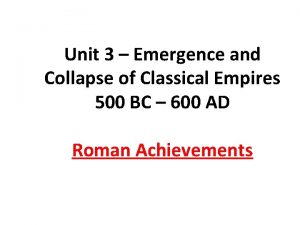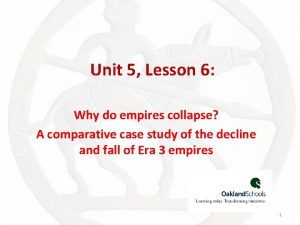Difficulties and the Collapse of Empires Political cultural



















- Slides: 19

Difficulties and the Collapse of Empires Political, cultural, environmental, and administrative difficulties lead to decline, collapse, or transformation

Deforestation • Deforestation, clearance or clearing is the removal of a forest or stand of trees where the land is thereafter converted to a non-forest use. Examples of deforestation include conversion of forestland to farms, ranches, or urban use. • A typical progress trap was that cities were often built in a forested area, which would provide wood for some industry (for example, construction, shipbuilding, pottery). When deforestation occurs without proper replanting, however; local wood supplies become difficult to obtain near enough to remain competitive, leading to the city's abandonment, as happened repeatedly in Ancient Asia Minor. Because of fuel needs, mining and metallurgy often led to deforestation and city abandonment.

Desertification • The process of fertile land transforming into desert typically as a result of deforestation, drought or improper/inappropriate agriculture; such as the movement diversion of rivers and streams for irrigation purposes • Desertification has played a significant role in human history, contributing to the collapse of several large empires, such as Carthage, Greece, and the Roman Empire, as well as causing displacement of local populations.

Soil Erosion • There is considerable archaeological evidence from many parts of the world that accelerated erosion by water (in particular) is often associated with early agriculture. • Deforestation, roads, and urban sprawl are amongst the most significant human activities in regards to their effect on stimulating erosion. Soil degradation is also a contributing factor due to lack of crop rotation

Silted Rivers • Thick deposits of silty material resulting from aeolian deposition are often called loess • A Silting River Kills Ephesus • Ancient Ephesus was once a thriving port city but silting of the harbor from the deposits carried by the Cayster River caused the port to progressively move seaward. The retreating harbor presently six miles from the city ruins, meant that shipping was no longer tenable and as trade ships preferred Smyrna, so too did the Ephesians move out and eventually the magnificent city was fully abandoned.

Deforestation Stumps would also have to be removed before the land could be planted

Desertificaiton Northwest China

Soil Erosion Due to improper agricultural practices

Silted Rivers Cause flooding, due to deposits of silt from run off

External Problems • • • Resulting from invasion Security issues Han Vs. Xiongnu Gupta Vs. White Huns Romans Vs. Northern Neighbors

Han Vs. Xiongnu • Full-scale war broke out in autumn 129 BC, when 40, 000 Chinese cavalry made a surprise attack on the Xiongnu at the border markets. • As a result of these battles, the Chinese controlled the strategic region from the Ordos and Gansu corridor to Lop Nor. They succeeded in separating the Xiongnu from the Qiang peoples to the south, and also gained direct access to the Western Regions. • Bad weather in the Xiongnu region forced the Han to retreat from a full victory and after the death of Ban Chao the subsequent dynasties were never able to reach so far West

Han Dynasty 2 CE

Gupta Vs. White Huns • The Hephthalites broke east by the end of the fifth century, hastening the disintegration of the Gupta Empire. • After the sixth century, little is recorded in ancient India about the Hephthalites, and what happened to them is unclear.

Huns Invade The fall of the Gupta Empire

Romans VS. Northern Aggressors • Large and vigorous, the people prized strength and courage in battle; these were the attributes of the Germanic tribes • In Asia, during the 4 th century, restless nomads called Huns were on the march from the east. Mounted on swift horses, they attacked with lightning ferocity all tribes in their path. Crossing the Volga River, they conquered the Ostrogoths in eastern Europe. Fearing that the Huns would attack them also, the Visigoths implored Roman authorities for sanctuary in the empire. The Roman officials agreed, promising them lands for settlement provided they came unarmed.

Romans Vs. Germanics continued • Neither side lived up to the agreement, however, and the Visigoths, without land facing starvation, began to sack Roman settlements. When the Roman emperor Valens led a great army against the Visigoths, to the astonishment of Romans and Germans alike, the imperial force was scattered and the emperor slain. This battle on the field of Adrianople in 378 A. D. is considered one of the decisive battles in world history because it rendered the Roman Empire defenseless. German tribes outside the frontiers began to round up their cattle, mobilize their fighting men, and move toward the Roman borders.

Roman Fortifications Constantly attacked by the Germanic tribes

Romans VS. Germans The great battle on the plains of the dining room table

Germans Vs. Romans Early Germanic Campaigns
 Land based empires vs maritime empires
Land based empires vs maritime empires Political transformations empires and encounters
Political transformations empires and encounters Chapter 5 political transformations empires and encounters
Chapter 5 political transformations empires and encounters Quality business a level
Quality business a level Puritans england
Puritans england 悅讀悅寫意
悅讀悅寫意 Interactivity chart problem solving
Interactivity chart problem solving What are the difficulties in listening
What are the difficulties in listening Financial difficulties are commonly caused by overspending
Financial difficulties are commonly caused by overspending Principles of information security 5th edition pdf
Principles of information security 5th edition pdf Rise and fall of songhai empire
Rise and fall of songhai empire How did the ottoman safavid and mughal empires arise
How did the ottoman safavid and mughal empires arise Olmec maya aztec inca map
Olmec maya aztec inca map The policy of establishing colonies and building empires
The policy of establishing colonies and building empires Chapter 17 nomadic empires and eurasian integration
Chapter 17 nomadic empires and eurasian integration Chapter 17 nomadic empires and eurasian integration
Chapter 17 nomadic empires and eurasian integration Chapter 4 section 1 the egyptian and nubian empires
Chapter 4 section 1 the egyptian and nubian empires Ottoman, safavid, and mughal empires venn diagram
Ottoman, safavid, and mughal empires venn diagram Chapter 18 nomadic empires and eurasian integration
Chapter 18 nomadic empires and eurasian integration Chapter 17 nomadic empires and eurasian integration
Chapter 17 nomadic empires and eurasian integration







